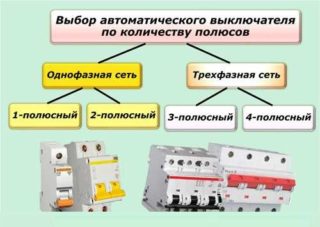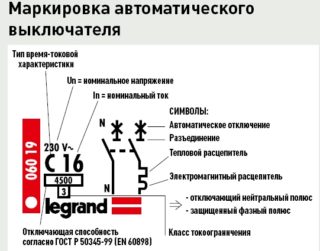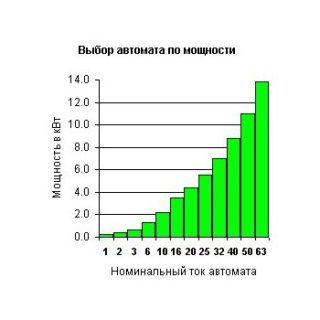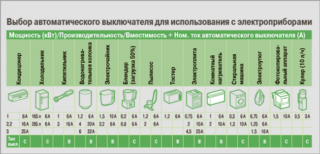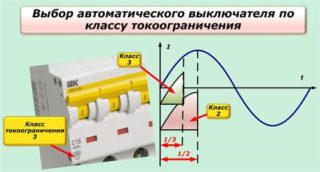Circuit breakers are devices through which the power supply line is protected against the negative effects of a powerful current, which can provoke overheating of wires, melting of insulation and ignition.
Why do you need circuit breakers
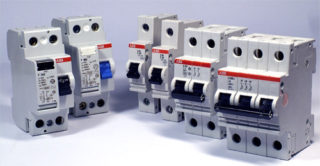
There are many reasons why the current in the network can exceed normal values. This is mainly due to excessive load, when the total power of the connected devices exceeds the value that the cable cross-section can withstand. In this case, the machine does not turn off immediately, but only after the wire temperature reaches the set level.
If a short circuit occurs in the network, this leads to a multiple increase in current power in an instant, so the circuit breaker immediately reacts to the situation and blocks the supply of electricity.
What are the machines
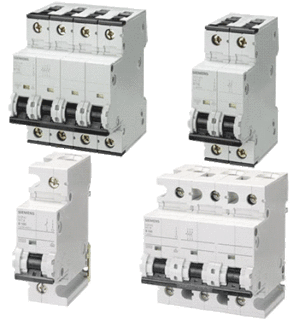
There are three categories that a network circuit breaker can belong to. Each of them is designed for a specific load, and the differences between the types lie in the features of the structure used.
- Modular devices can most often be found in household networks connected to a power supply network with low currents. In the majority of cases, they are distinguished by the presence of one or two poles.
- Cast are used in industrial networks, where the current power reaches 1000 A. They got their name because their main feature is the use of a cast case.
- Air circuit breakers can have up to four poles, being able to withstand currents up to 6300 A. In this regard, they are installed only in electrical circuits to which high-power installations are connected.
There are also differential circuit breakers, these are ordinary switches that have an RCD in their design.
Releases and their varieties
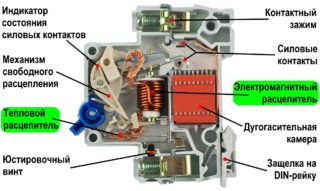
A release is a key element of any circuit breaker. It has the function of blocking the power supply if the current exceeds the permissible value. At the same time, there are two types of such devices that can be equipped with a circuit breaker - thermal or electromagnetic.
The latter are distinguished by the fact that with their help an almost instantaneous operation of the protective system is achieved, and the section is immediately de-energized as soon as the occurrence of a short circuit is recorded. The design includes a coil with a core, which, under the influence of a strong current, is drawn inward, due to which the tripping element is constantly triggered.
The key component of the thermal release is the bimetal plate. If the machine detects the passage of a current through it, the strength of which exceeds the set value, the temperature of the plate rises, and due to this, it clings to the disconnecting element, which instantly disconnects the network from the supply. The time interval for which this element will operate will directly depend on the strength of the current passing through the plate.
As an additional device, zero releases are often installed, which open the circuit breaker if the voltage is below the permissible limit.
There are remote-type devices that not only block, but also return the power supply without the need to independently approach the electrical panel. However, these options add significantly to the overall cost of the equipment.
The difference between machines in the number of poles
- One pole. Designed for safety in the electrical network that supplies power to ordinary outlets and lighting in the house. Installed on the phase wire, excluding the capture of the zero.
- Two poles. They are connected to a circuit that supplies power to household appliances with high energy consumption. This category includes electric stoves, washing machines and others.
- Three poles. They are installed in semi-industrial networks that provide power to powerful devices like borehole pumps or car workshop installations.
- Four poles. They ensure the safety of the network from overloads and short circuits, allowing you to connect four cables to it at once.
Devices are selected only depending on their area of application.
Circuit breaker parameters
The characteristics of circuit breakers are another indicator by which they differ from each other. First of all, craftsmen pay attention to how sensitive protective equipment is to current surges. It is enough to look at the corresponding markings to understand how the device will react to an increase in current strength. Some immediately turn off access to power, while others are triggered with a delay.
Depending on the sensitivity, the marking also changes:
- A. The most sensitive and efficient devices that instantly cut off the power supply as soon as an increased load is detected. They are not used in household networks. The main applications are circuits that supply power to precision equipment.
- B. When the current exceeds the rated value of the force, the machine turns off the power with a short delay. In the vast majority of cases, the scope of these devices are the lines into which expensive household appliances are connected.
- C. The most popular version of machines for domestic use. When such equipment detects an excess of current, they do not immediately turn off the power supply, but with a certain delay. Thanks to this, if the difference is insignificant, the load can be normalized by itself, without requiring a forced shutdown of the entire room.
- D. They have the lowest sensitivity, which is why the main area of their application is electrical panels located on the way to the building. In other words, these shields provide a kind of safety net for apartment devices: if the latter for some reason do not work after a critical situation is detected, the general network is turned off by these devices.
There are also special machines for networks with loads above 1000 volts. Such circuit breakers are sophisticated equipment that is custom-made for the required voltage class. In most cases, they are mounted on transformer substations. They must be reliable, safe, easy to operate, quickly respond to emergencies and be relatively quiet during operation.
How to choose a circuit breaker
If the permissible power of the machine, on the contrary, does not reach that which the power supply line withstands, it is almost impossible to achieve normal operation of the circuit. After connecting several devices, the electricity will immediately knock out, as a result, due to the constant influence of a large current, it will break due to the "sticking" of the contacts.
A circuit breaker is an extremely important device that protects the power supply against the risk of damage from high current. The operation of networks in which there are no machines is prohibited in accordance with the Rules for the Installation of Electrical Installations. In this regard, it remains only to choose the right type of switch that will provide reliable network protection.

